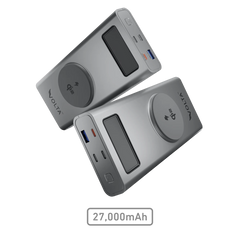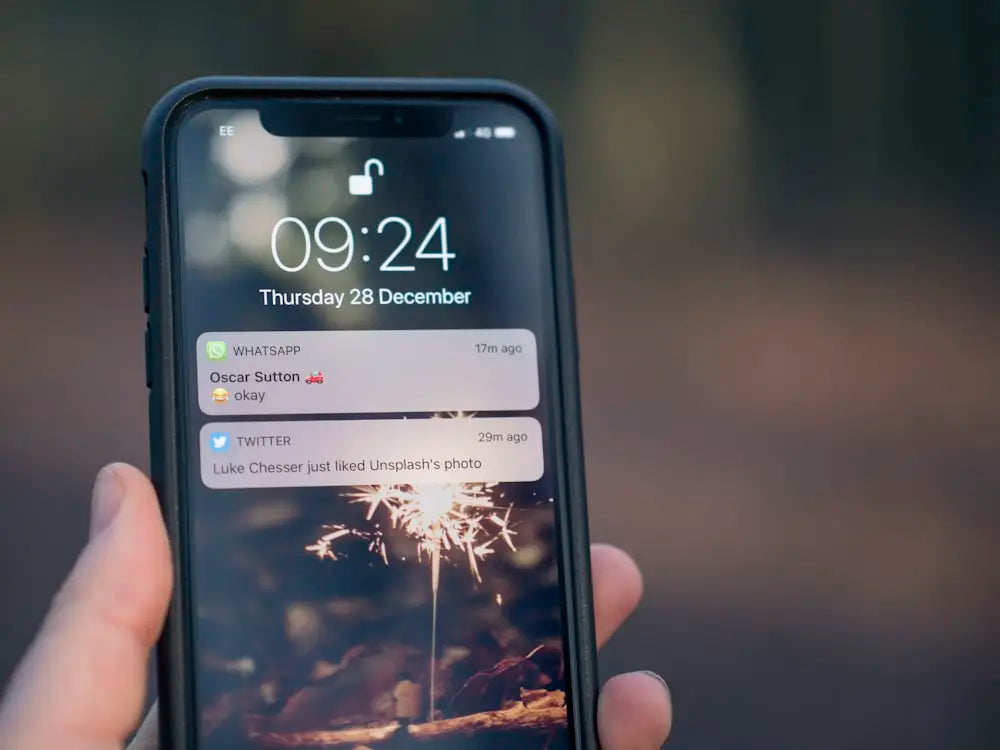A swollen power bank, while concerning, isn't necessarily the end of the world. But it is a sign that something's wrong, and it's important to understand why and how to handle the situation safely.
Understanding Lithium-ion Battery
Most modern power banks, like yours, rely on lithium-ion batteries to store energy. These powerhouses pack a lot of punch in a small package, making them ideal for portable charging. However, lithium-ion batteries are complex chemical systems, and under certain conditions, they can degrade and swell.
There are several factors that can contribute to a swollen power bank battery:
Overheating: Extreme temperatures, either during charging or discharging, can cause the battery to expand and potentially rupture.
Overcharging: Leaving your power bank plugged in for extended periods, even after it's fully charged, can stress the battery and lead to swelling.
Deep discharge: Completely draining the battery before recharging can damage the internal components and cause swelling.
Manufacturing defects: In rare cases, a faulty battery cell from the manufacturer could be to blame.
Age: Like all things, batteries have a lifespan. Over time, the capacity will decrease, and the risk of swelling increases.
The Dangers of a Swollen Power Bank
A swollen power bank isn't just an eyesore; it's a potential safety hazard. The internal pressure can build up, causing the battery to leak, vent flammable electrolytes, or even explode. Here's why you should take a swollen power bank seriously:
Fire risk: Leaking electrolytes can come into contact with electrical components and ignite.
Toxic fumes: The electrolytes in lithium-ion batteries contain harmful chemicals that can be released if the battery ruptures.
Burns: Leaking electrolytes can cause skin and eye irritation.
What to Do With a Swollen Power Bank
Now that you understand the cause and dangers of a swollen power bank, here's what you should do if yours falls victim to this unfortunate situation:
1. Stop using it immediately: Don't try to charge it, discharge it, or even move it around too much.
2. Place it in a safe location: Move the swollen power bank to a cool, well-ventilated area away from flammable materials. Ideally, place it on a non-combustible surface like a concrete floor or ceramic tile.
3. Isolate it: If possible, keep the power bank away from other electronics or flammable objects.
4. Dispose of it properly: Don't throw your swollen power bank in the trash! Lithium-ion batteries require special handling for safe disposal. Luckily, many electronics stores and recycling centers accept these batteries. You can find a local drop-off location by searching online.
Here are some additional tips:
Take pictures: Before disposing of the battery, take a few pictures of the damage. This can be helpful if you need to file a warranty claim with the manufacturer.
Contact the manufacturer: If your power bank is still under warranty, contact the manufacturer to see if they will replace it.
Preventing Power Bank Swelling in the First Place.
An ounce of prevention is worth a pound of cure, as the saying goes. Here are some tips to help ensure your power bank stays healthy and functional for a long time:
Use a high-quality charger: Always use the original charger that came with your power bank, or a reputable third-party charger that is specifically designed for lithium-ion batteries. Using a versatile charging cable like the Volta Max keeps your power bank safe and reduces the chances of getting a swollen power bank.
Avoid extreme temperatures: Don't leave your power bank in direct sunlight or in a hot car. Likewise, avoid using it in freezing temperatures.
Don't overcharge or deep discharge: Unplug your power bank once it's fully charged, and avoid letting it completely drain before recharging.
Store it properly: When not in use, store your power bank in a cool, dry place.
Invest in a reliable power bank:Choosing a well-made power bank like the VoltaGo Max from a reputable brand can significantly reduce the risk of swelling.

VoltaGo MAX Reservation
The
Ultimate
VoltaGo
MAX
Power
Bank
Launch
is
here. VOLTA
Max
is
a
singular
power
system
that
will
work
with
just
about
any
device
you
own.
...
Introducing the VoltaGo Max 27,000mAh Power Bank: Your Safe and Reliable Power Solution
– the perfect solution for keeping your devices charged on the go, with peace of mind.
We understand that a swollen power bank can be a scary experience. But it's important to remember that not all power banks are created equal. Here at Volta, we prioritize safety and quality in every product we design.
The VoltaGo Max uses premium Lithium-ion battery cells that are rigorously tested to ensure safety and longevity. We incorporate multiple safety features to prevent the very issues that can lead to swelling
Stylish and Portable
The VoltaGo Max comes with a blend of style and portability
FAQ's
Why do power banks swell?
Swelling in power banks typically occurs due to the battery’s internal chemical reactions becoming unstable. Overcharging, using low-quality chargers, or exposing the power bank to extreme heat can cause this. The battery's electrolyte expands, leading to the swelling.
Is a swollen power bank dangerous?
Yes, a swollen power bank poses serious risks. It can potentially leak harmful chemicals, catch fire, or even explode. If you notice swelling, immediately stop using the power bank and dispose of it safely according to local e-waste guidelines.
How can I prevent my power bank from swelling?
To prevent swelling, use a high-quality charger, avoid overcharging, keep your power bank away from heat, and regularly monitor its condition. It's also essential to follow the manufacturer’s instructions on charging cycles and storage.
Can I fix a swollen power bank?
No, a swollen power bank should never be repaired. It should be safely disposed of as it has already become a hazard. Continuing to use or tamper with a swollen battery increases the risk of fire or explosion.
What are the signs that my power bank is failing?
Signs include swelling, slow charging, overheating, or not holding a charge as long as it used to. If any of these occur, it’s time to replace the power bank.
Can I take a power bank on a plane?
Yes, power banks are allowed in carry-on luggage but not in checked bags. However, they must adhere to airline regulations on battery capacity. Typically, power banks under 100Wh are allowed on flights without approval.
How do I choose the right power bank for my needs?
Consider the capacity (measured in mAh), the number of devices you plan to charge, and features like fast charging, size, and weight. A versatile option like the VoltaGo Max Power Bank can meet a range of needs with its 27,000 mAh capacity and convenient magnetic connection.
How do I properly dispose of a damaged or swollen power bank?
Swollen or damaged power banks should be disposed of at designated e-waste or recycling centers. Never throw them in regular trash as they can be harmful and flammable.
What’s the best way to store a power bank when not in use?
Store your power bank in a cool, dry place, and avoid leaving it fully charged or fully depleted for long periods. Keeping it at about 50% charge is ideal for long-term storage.






2 comments
Francis
I want to know how to dispose an old bloated power banks..Searching here in Google they told us to give to the proper disposal management or look for manufacturers manual..Tired of reading all this stuff..I would like a brief and accurate advice base on your experience..Should soaking in water before throwing it away much better or still dangerous.? Pls respect my question.😊
Ahmad Dan-Hamidu
I’ve been hearing and reading from the likes of phone battery management app-maker “AccuBattery”, Samsung Galaxy and even the electric vehicle division of Mercedes-Benz that the lifespan of Lithium-ion batteries can be extended and kept healthy if:
1. Used only within the 20% to 80% state-of-charge range. This means you shouldn’t allow it to discharge below 20% and should recharge it above 80% (85% in the case of Samsung Galaxy phone’s “battery protect” feature). It’s claimed that this range yields the least stress on the cells.
2. That when recharging, its best to recharge it in a single, uninterrupted charging session that starts from 20% all the way to 80% followed promptly by a disconnection from power source.
3. The least use (amount) of “fast-recharging” and/or “fast-discharging” also exerts the least stress on the cells and that the more “slow/normal charging/discharging” is used, the better for the cell’s health/longevity.
Please correct me where I have any misconceptions of what I’ve come across so far as I’m still learning about this fascinating tech. Thanks.
Leave a comment
This site is protected by hCaptcha and the hCaptcha Privacy Policy and Terms of Service apply.